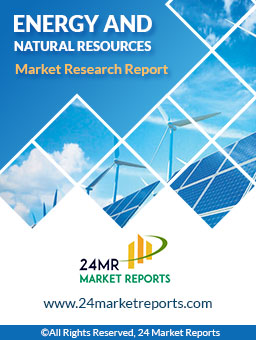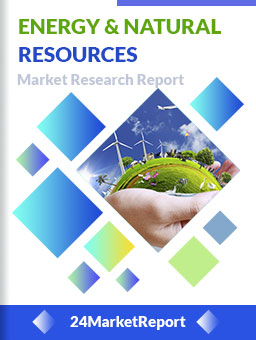
Download FREE Report Sample
Download Free sample
MARKET INSIGHTS
Global Solar Water Pumping Inverters market size was valued at USD 832 million in 2024 and is projected to reach USD 1262 million by 2032, exhibiting a CAGR of 6.3% during the forecast period. While this growth appears steady, accelerating adoption in emerging markets could push these figures even higher.
Solar water pumping inverters serve as critical components in off-grid irrigation and water supply systems, converting DC power from solar panels into AC power to drive submersible or surface pumps. These systems are particularly vital in remote agricultural regions where grid electricity is unreliable or unavailable. The technology enables efficient water management while reducing dependence on diesel generators, aligning perfectly with global decarbonization goals.
The market expansion is primarily driven by supportive government policies worldwide. China's Renewable Energy Law prioritizes clean energy adoption, while Europe's Net-Zero Industry Act targets 600 GW of solar capacity by 2030. The U.S. Inflation Reduction Act's USD 369 billion clean energy investment further bolsters market prospects. These initiatives, combined with decreasing solar technology costs, are making water pumping inverters increasingly accessible across commercial farms and rural communities.
Global Renewable Energy Push Accelerates Solar Water Pumping Adoption
The transition toward renewable energy solutions is fueling rapid growth in solar water pumping inverters. Worldwide commitments to reduce carbon emissions have led governments to implement favorable policies supporting solar technology deployment. The European Union's Net-Zero Industry Act targets 600 GW of installed solar capacity by 2030, while Japan mandates solar panel installations on new residential buildings from 2025. These initiatives create substantial demand for supporting infrastructure like water pumping inverters. The market benefits from both large-scale agricultural implementations and small-scale residential systems, with Asia Pacific currently leading adoption due to concentrated government efforts in China and India.
Technological Advancements Enhance System Efficiency
To know more about market statistics, Download a FREE Sample copy
Recent innovations in inverter technology significantly improve the performance and reliability of solar water pumping systems. Modern inverters now achieve conversion efficiencies exceeding 98%, while incorporating smart features like MPPT tracking and remote monitoring capabilities. Manufacturers are developing hybrid systems that integrate battery storage and grid connectivity, addressing intermittency concerns. These technological improvements make solar water pumping more viable for both irrigation and domestic water supply applications. The development of ruggedized inverters specifically designed for harsh environmental conditions expands potential applications in desert and tropical regions.
➤ The US Inflation Reduction Act's $369 billion clean energy investment package includes substantial incentives for solar water pumping systems, particularly in agricultural applications.
Furthermore, decreasing photovoltaic panel costs combined with rising diesel prices enhance the economic viability of solar water pumps. The levelized cost of energy for solar pumping systems has fallen by nearly 60% over the past decade, making them cost-competitive with conventional alternatives in most regions.
High Initial Investment Poses Adoption Barrier
Despite long-term savings, the substantial upfront cost of solar water pumping systems remains a significant market restraint. A complete system including panels, inverters, pumps and installation can cost 2-3 times more than conventional alternatives. This pricing disparity limits adoption among small-scale farmers and rural communities, particularly in developing economies. Financing mechanisms like leasing models and government subsidies are emerging to address this challenge, but widespread accessibility remains constrained by limited financial infrastructure in key growth regions.
Technical Limitations in Low-Light Conditions
Solar water pumping systems demonstrate reduced efficiency during cloudy periods and winter months, creating reliability concerns for continuous water supply needs. While battery backup systems offer a solution, they further increase system complexity and cost. This performance variability restricts adoption in regions with inconsistent solar irradiation, requiring careful system design and often supplemental power sources.
Supply Chain Vulnerabilities
The industry faces ongoing challenges from global supply chain disruptions affecting critical components like semiconductors and rare earth metals. Lead times for high-quality inverters have extended considerably in recent years, while fluctuating raw material prices create pricing instability. These factors complicate project planning and budgeting for both suppliers and end-users.
Emerging Markets Present Untapped Potential
Africa and parts of Southeast Asia represent high-growth opportunities with substantial unmet demand for reliable water pumping solutions. Over 60% of Sub-Saharan Africa's population lacks consistent access to electricity, creating ideal conditions for standalone solar water systems. Government initiatives like India's KUSUM scheme, which aims to solarize 2.8 million agricultural pumps, demonstrate the massive scalability potential in developing economies. Manufacturers developing cost-optimized solutions tailored to these price-sensitive markets stand to gain significant market share.
The integration of IoT capabilities creates new value propositions for commercial and agricultural users. Smart inverters with real-time monitoring, predictive maintenance alerts, and automated water management features enable precision agriculture applications. These advanced systems command premium pricing while delivering tangible operational benefits through water conservation and reduced labor requirements.
Technical Expertise Shortage Constrains Market Expansion
The solar water pumping sector faces a critical shortage of qualified installation and maintenance technicians, particularly in rural areas where systems are most needed. Proper system design requires expertise in solar irradiation patterns, hydraulic requirements, and electrical engineering - skills that are scarce in emerging markets. This skills gap leads to suboptimal installations that underperform or fail prematurely, damaging market confidence. Training programs and simplified system designs are emerging to address this challenge, but the pace of workforce development lags behind market growth.
Regulatory Fragmentation
Differing certification requirements and technical standards across countries complicate international expansion for manufacturers. The lack of unified global standards for solar water pumping equipment creates additional compliance costs and slows new market entry. Some regions impose strict local content requirements, forcing foreign manufacturers to establish domestic production facilities or partnerships.
Environmental Factors
While solar pumping reduces carbon emissions, other environmental considerations present challenges. Improperly designed systems can contribute to groundwater depletion if not paired with appropriate water management practices. Additionally, the industry faces growing pressure to address end-of-life recycling for solar components, particularly inverters containing valuable but potentially hazardous materials.
380V Segment Dominates Due to Higher Efficiency in Commercial and Agricultural Applications
The global solar water pumping inverter market is segmented by voltage type into:
220V
380V
Commercial Segment Leads With Expanding Solar Water Pump Projects in Agriculture and Industry
The market is categorized by application into:
Commercial
Home Use
High Power Inverters Gain Traction for Large-Scale Irrigation Systems
The market is divided by power capacity into:
Below 5HP
5HP-15HP
Above 15HP
MPPT Technology Dominates Due to Superior Energy Conversion Efficiency
The market is segmented based on technology:
MPPT (Maximum Power Point Tracking)
PWM (Pulse Width Modulation)
Technological Innovation and Regional Expansion Define Market Competition
The solar water pumping inverters market features a diverse competitive environment with multinational corporations, regional specialists, and emerging tech providers vying for market share. ABB and Schneider Electric currently dominate the sector, leveraging their established distribution networks and reputation for industrial-grade power conversion solutions. Together, they command approximately 28% of the global market revenue as of 2024.
Meanwhile, Asian manufacturers like JNTECH and INVT are gaining rapid traction through cost-competitive offerings tailored for agricultural applications. Their growth has been particularly strong in developing markets where affordability and local service networks provide distinct advantages.
The competitive landscape is witnessing three key strategic movements:
Specialist players such as GRUNDFOS are differentiating themselves through application-specific inverters optimized for deep well pumping, while newer entrants like VEICHI and MNE are challenging established brands with modular, scalable designs.
ABB (Switzerland)
Schneider Electric (France)
Hitachi (Japan)
Voltronic Power (Taiwan)
GRUNDFOS (Denmark)
OREX (India)
INVT (China)
JNTECH (China)
B&B Power (India)
Micno (China)
Sollatek (UK)
Restar Solar (China)
Solar Tech (India)
Gozuk (China)
MNE (China)
Voltacon (UK)
Hober (Germany)
MUST ENERGY Power (China)
VEICHI (China)
Sandi (China)
The global solar water pumping inverters market is experiencing significant growth due to increasing governmental support for renewable energy projects worldwide. Countries like China, India, and Japan in the Asia-Pacific region are leading adopters, implementing policies such as subsidies and tax incentives to promote solar energy utilization. For instance, China's Renewable Energy Law prioritizes clean energy development, while Japan aims to make solar panels mandatory for new residential buildings in Tokyo by 2025. In the United States, the Inflation Reduction Act allocates $369 billion toward energy security and climate initiatives, including substantial investments in solar technology. These legislative measures are accelerating the adoption of solar water pumping systems, particularly in off-grid agricultural and rural applications where traditional power infrastructure is lacking. The EU’s Net-Zero Industry Act further underscores this trend by targeting 600 GW of installed solar capacity by 2030.
Technological Advancements in Solar Inverter Efficiency
Recent innovations in solar water pumping inverters focus on enhancing energy conversion efficiency and system durability. Manufacturers are integrating Maximum Power Point Tracking (MPPT) algorithms to optimize power output under varying weather conditions. Smart inverters with IoT capabilities are also gaining traction, enabling real-time monitoring and remote diagnostics. These advancements reduce maintenance costs and improve reliability for end-users, particularly in regions with unstable grid connections. The market is witnessing a shift toward modular designs, allowing scalability for both small-scale farming and large irrigation projects. High-voltage models (380V) are increasingly preferred for commercial applications due to their ability to support higher-capacity pumps.
The agricultural sector accounts for over 70% of global freshwater withdrawals, creating urgent demand for energy-efficient water management systems. Solar water pumping inverters offer a cost-effective alternative to diesel-powered pumps, eliminating fuel costs and reducing carbon emissions. In water-stressed regions like Africa and the Middle East, solar-powered irrigation is transforming crop yields by enabling consistent water supply without reliance on erratic grid power. Private sector investments in agri-solar projects are further propelling market expansion, with solar pumps becoming integral to precision farming techniques. The growing emphasis on food security and climate-resilient agriculture is expected to sustain long-term demand, particularly as governments prioritize sustainable development goals.
North America
The North American solar water pumping inverter market is driven by policy support, particularly the Inflation Reduction Act (2022), which allocates $369 billion toward clean energy initiatives. This has accelerated investments in solar infrastructure, including water pumping systems for agricultural and remote applications. The U.S. leads regional adoption due to its focus on off-grid solutions for farming communities, backed by federal tax credits. Water scarcity in southwestern states further fuels demand. However, high upfront costs and competition from conventional pumping systems remain challenges. The market is characterized by advanced, high-efficiency inverters from key players like Schneider Electric and ABB.
Europe
Europe's market thrives under the EU's Net-Zero Industry Act (2023), aiming for 40% locally manufactured clean tech by 2030. Countries like Germany, France, and Spain are prioritizing solar-powered irrigation to reduce carbon footprints in agriculture. The region emphasizes smart water management, integrating IoT-enabled inverters for precision pumping. Strict environmental regulations and subsidies for renewable projects bolster adoption. While growth is steady, dependence on Asian imports for components and slower rural electrification in Eastern Europe temper expansion. The focus remains on scalable, hybrid systems combining solar with grid power.
Asia-Pacific
As the largest market globally, Asia-Pacific accounts for over 50% of solar water pumping inverter demand, led by China and India. China’s Renewable Energy Law and India’s PM-KUSUM scheme subsidize solar pumps for farmers, aiming to replace 30 million diesel units by 2030. Southeast Asian nations are adopting similar policies, but affordability constraints keep lower-voltage (220V) systems dominant. Japan sees growth through mandates for solar integration in buildings. The region’s key advantage is localized manufacturing, with firms like JNTECH and INVT offering cost-competitive solutions. However, inconsistent policy execution and subsidy delays in some countries hinder market potential.
South America
The region shows moderate growth, driven by Brazil’s agricultural sector and Chile’s mining industry, both leveraging solar pumps to cut operational costs. Brazil’s "Luz para Todos" program promotes off-grid solar solutions in rural areas, though economic instability slows large-scale adoption. Argentina and Colombia are piloting subsidy schemes, but currency fluctuations deter foreign investment. Market players prioritize durable, low-maintenance inverters suited to harsh climates. The lack of standardized regulations and financing options remains a barrier, despite abundant solar resources.
Middle East & Africa
This emerging market is propelled by water scarcity and solar-rich conditions. The UAE and Saudi Arabia invest heavily in solar-powered desalination and irrigation, with projects like NEOM driving demand. Sub-Saharan Africa relies on donor-funded initiatives for rural water access, favoring affordable, decentralized systems. South Africa leads in commercial adoption, while East African nations use pay-as-you-go models. Political instability in some areas and inadequate grid infrastructure limit growth, but the region holds long-term potential as technology costs decline and modular systems gain traction.
This market research report offers a holistic overview of global and regional markets for the forecast period 2025–2032. It presents accurate and actionable insights based on a blend of primary and secondary research.
✅ Market Overview
Global and regional market size (historical & forecast)
Growth trends and value/volume projections
✅ Segmentation Analysis
By product type or category
By application or usage area
By end-user industry
By distribution channel (if applicable)
✅ Regional Insights
North America, Europe, Asia-Pacific, Latin America, Middle East & Africa
Country-level data for key markets
✅ Competitive Landscape
Company profiles and market share analysis
Key strategies: M&A, partnerships, expansions
Product portfolio and pricing strategies
✅ Technology & Innovation
Emerging technologies and R&D trends
Automation, digitalization, sustainability initiatives
Impact of AI, IoT, or other disruptors (where applicable)
✅ Market Dynamics
Key drivers supporting market growth
Restraints and potential risk factors
Supply chain trends and challenges
✅ Opportunities & Recommendations
High-growth segments
Investment hotspots
Strategic suggestions for stakeholders
✅ Stakeholder Insights
Target audience includes manufacturers, suppliers, distributors, investors, regulators, and policymakers
-> Key players include ABB, Hitachi, Voltronic Power, Schneider Electric, OREX, JNTECH, GRUNDFOS, INVT, B&B Power, and Micno, among others.
-> Key growth drivers include rising demand for solar technology in commercial and residential sectors, supportive government policies, increasing investments in solar energy, and development of solar parks and smart city projects.
-> Asia-Pacific holds the largest market share due to strong government initiatives in countries like China, India, and Japan to adopt solar energy at scale.
-> Emerging trends include integration of IoT for smart monitoring, development of hybrid solar pump systems, and increasing focus on sustainable water solutions for remote areas.

Speak to our Custom Research Team and get the Custom Research in a budget
Custom ResearchFrequently Asked Questions ?
A license granted to one user. Rules or conditions might be applied for e.g. the use of electric files (PDFs) or printings, depending on product.
A license granted to multiple users.
A license granted to a single business site/establishment.
A license granted to all employees within organisation access to the product.
Upto Working 24 to 48 hrs
Upto 72 hrs max - Weekends and Public Holidays
Online Payments with PayPal and CCavenue
Wire Transfer/Bank Transfer
Hard Copy




 Industry Market Size
Industry Market Size SWOT Analysis
SWOT Analysis Industry Major Players
Industry Major Players Revenue Forecasts
Revenue Forecasts Historical and Forecast Growth
Historical and Forecast Growth Profitability Analysis
Profitability Analysis
























